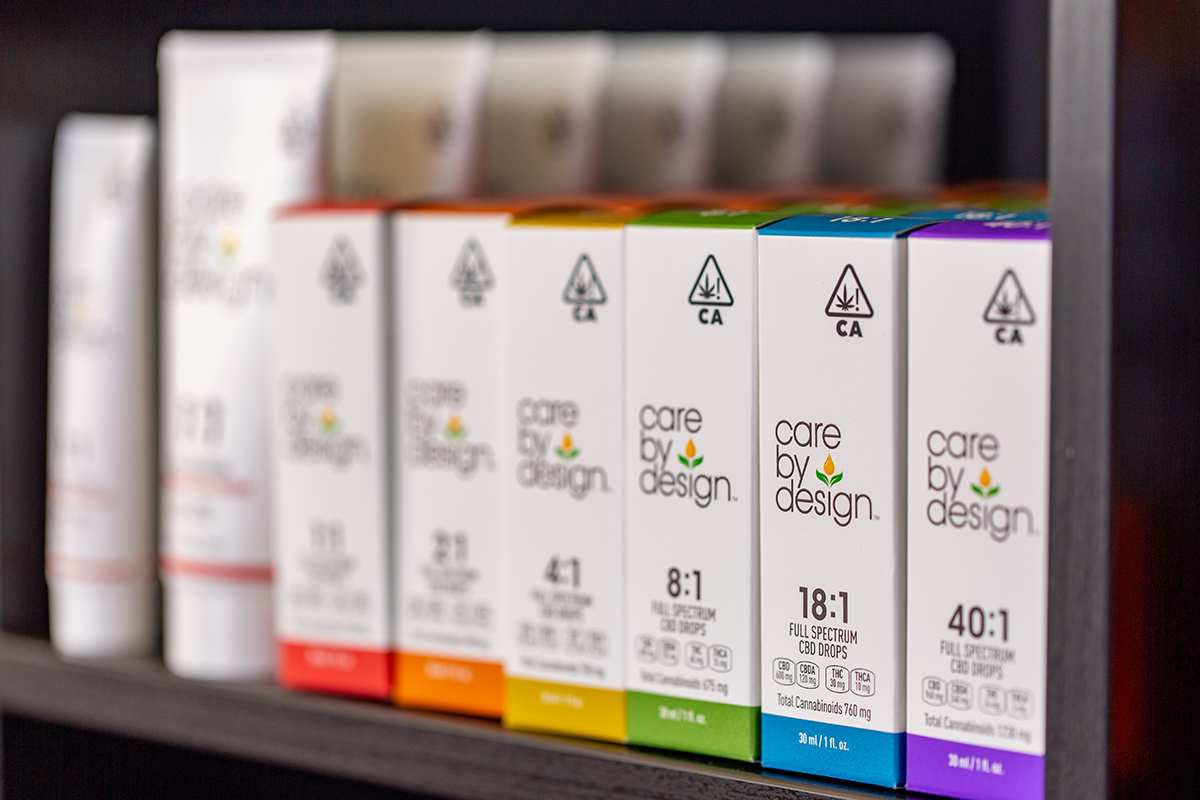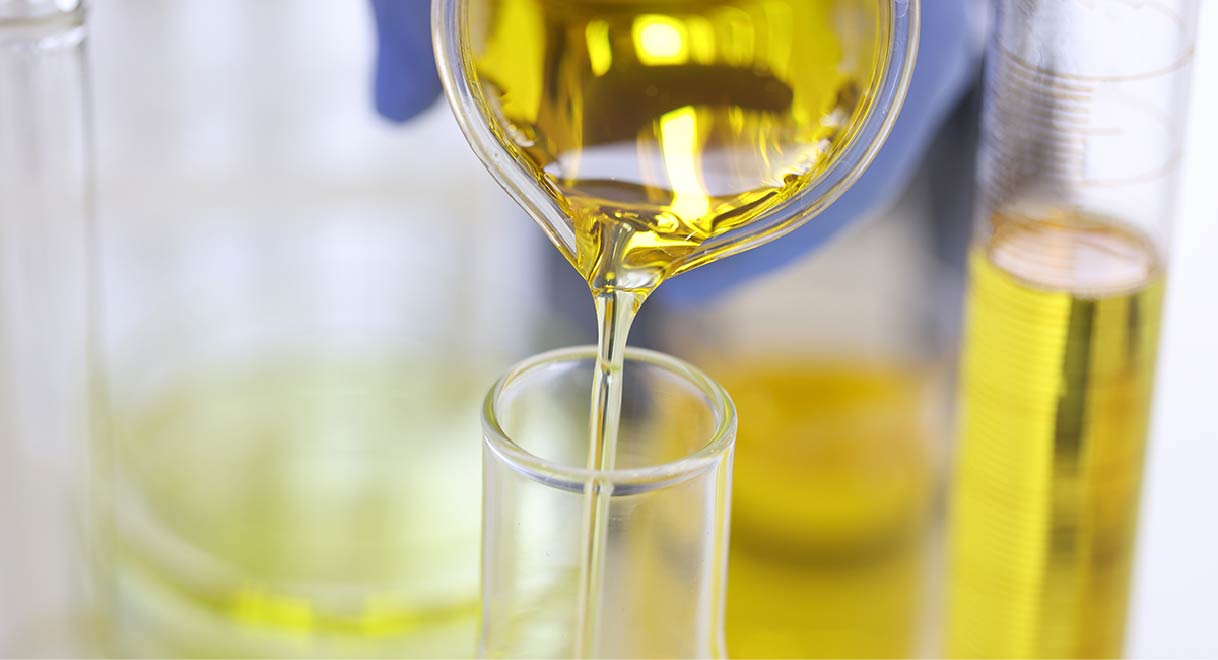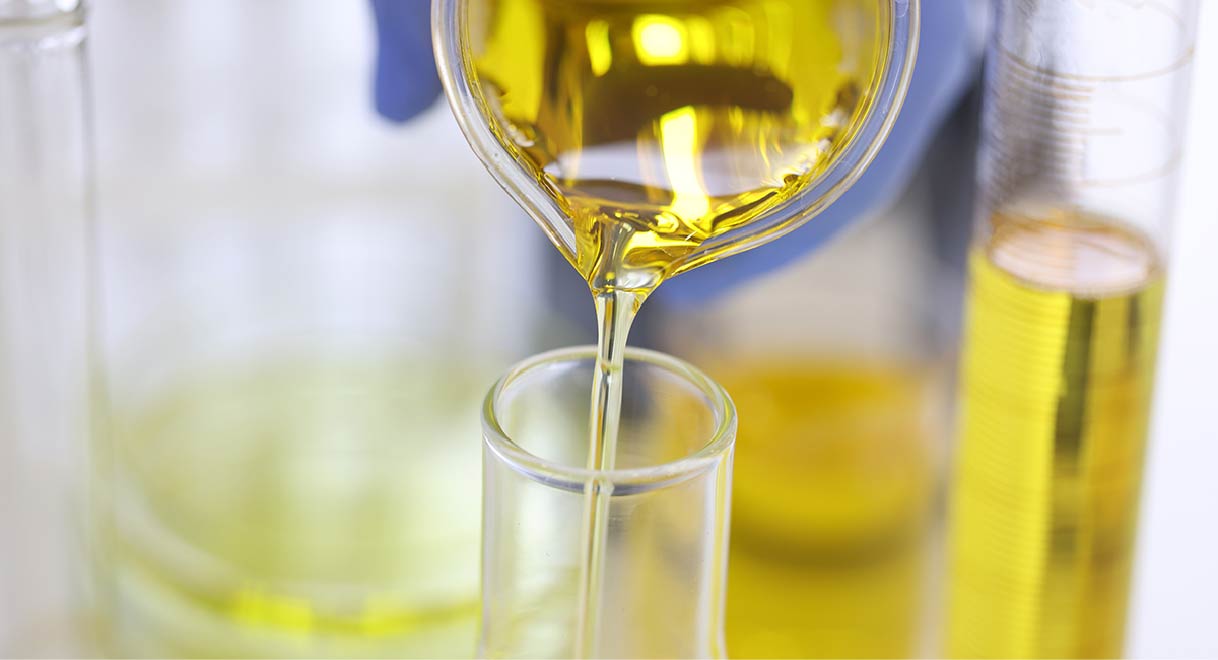You’ve probably seen the flurry of news reports proclaiming that “cannabis compounds may stop COVID-19 infection.”
Few companies are more committed to exploring the curative potential of cannabinoids than we are. After all, we were making CBD products long before it was fashionable or even unambiguously legal.
We were also among the first to theorize that cannabinoids might be helpful for COVID. In March 2020, Care By Design’s Tiffany Devitt co-authored this article with Martin Lee at Project CBD where they speculated that if COVID’s lethality was the result of a hyper-inflammatory cytokine storm, as Science Daily reported, then cannabidiol might help because of its anti-inflammatory properties.1,2
So, we would be delighted if cannabis compounds were shown to fight COVID.
What Happens in Petri Dishes...
But we’re going to be real with you. This much talked about new study does not say that smoking weed prevents or cures COVID. What the study does say (to be exact) is: “Cannabinoid acids from Cannabis sativa were found to be allosteric as well as orthosteric ligands with micromolar affinity for the spike protein.”
Huh? What exactly does that mean for you as a CBD consumer?
Basically, that means that these scientists looked at how CBDA, CBGA, and THCA, three non-psychoactive cannabinoid acids, interact with COVID molecules in a petri dish. The scientists observed that these cannabis compounds bind to the COVID virus proteins outside the human body, making it more difficult for the virus to penetrate human cells. It’s important to know though, that what happens in the petri dish, sometimes stays in the petri dish. It doesn’t always translate to animal models. And often what happens in animal models doesn’t translate to human models. The point is, the research is exciting, but we’re far from proving anything.
Acid, Non-Acid. What’s the Difference?
That brings us to the next question: What are CBDA (cannabidiolic acid) and CBGA (cannabigerolic acid)? Are they found in all hemp and cannabis products, or just some? When most people hear “cannabinoid” they think THC or CBD. CBDA and CBGA are among the hundreds of lesser-known or “minor” cannabinoids.3
Not all the “minors” are present in every strain and very few are included in products manufactured from cannabis or hemp plants. In fact, big hemp companies often advertise their products as “pure” or “isolate” CBD. In other words, they actually brag about the fact that they don’t include the beneficial terpenes, flavonoids, minor cannabinoids, and cannabinoid acids! Weird.
Cannabinoids also come in different forms. CBDA and THCA are the precursor or “acid” forms of CBD and THC.4 The conversion from the acid form to the neutral form happens when the substance is heated.5 Historically, there has been limited research on CBDA, THCA, and other cannabinoid acids but that’s quickly changing.6,7,8 Emerging pre-clinical data suggest they could be effective for nausea,9,10 inflammation,11,12 and – who knows – perhaps even COVID though it’s too early to tell.13,14,15
We Care
Despite their promise, the raw acid forms of cannabinoids are rarely included in CBD products. That’s because it’s expensive: Including them requires a dual-processing method where some of the CBD is heated and decarboxylated, and some of it is preserved in the acid form. Mixing numerous plant-derived cannabinoids in precise ratios and doses also requires a lot of testing and complex formulation, which take time, care, and expertise.
We think it’s worth it. Last year we reformulated our product line for the first time in eight years to include acidic cannabinoids, in particular, CBDA and THCA (neither of which is intoxicating). We’re proud to say Care By Design is one of the few brands in which you’ll find these important cannabis compounds today.
To a Healthy 2022
To sum it up, as we enter the third year of this global pandemic, here’s what we know:
- CBD and CBDA can be a valuable part of your daily wellness regime.
- Used wisely, plant cannabinoids may help reduce disease-causing stress,16,17,18 and inflammation.19,20
- Cannabis can support a restorative night’s sleep. 19
- Common sense practices (masks and vaccines) can reduce the severity of COVID.
- A life rich in community, connection, exercise, and healthy foods supports good health.
So, moving into 2022, let’s be smart and be safe: Please take really good care of yourself and those around you, and fortify your health with a daily dose of high quality cannabinoids. Meanwhile, we’ll continue to offer you the very best in CBD care – and an always-honest-look at the research.
Warm regards,
The Care By Design family
P.S. Want more? Click to download our Cannabis Wellness Guide here. It’s free.

- Evolution of the Cannabinoid and Terpene Content during the Growth of Cannabis sativa Plants from Different Chemotypes (Journal of Natural Products).
- R Mechoulam et al. Hashish. IV. The isolation and structure of cannabinolic cannabidiolic and cannabigerolic acids. Tetrahedron 1965 May;21(5):1223-9
- Combusting or warming cannabis causes a process called decarboxylation or “decarbing” and the resulting cannabinoids from THCa, CBDa and CBCa are THC, CBD and CBC with THC and CBD typically being the most prevalent.
- In a recent research update, Mary Biles noted that: “For many years, decarboxylated cannabinoids were considered the ‘activated’ compounds, producing more potent therapeutic effects in our bodies. However, this assumption has recently been turned upside down with studies showing CBDA’s activation of 5-HT1A serotonin receptors to be significantly more potent than CBD. And CBDA was also shown to have a stronger binding affinity than CBD as an antagonist at another important receptor known as GPR55.”
- S Takeda et al. Down-regulation of cyclooxygenase-2 (COX-2) by cannabidiolic acid in human breast cancer cells. The Journal of Toxicological Sciences. Vol.39, No.5, 711-716, 2014
- D Hen-Shoval et al. Acute oral cannabidiolic acid methyl ester reduces depression-like behavior in two genetic animal models of depression. Behav Brain Res 2018 Oct 1;351:1-3
- EM Rock et al. Cannabidiolic acid prevents vomiting in Suncus murinus and nausea-induced behaviour in rats by enhancing 5-HT1A receptor activation. Br J Pharmacol. 2013 Mar; 168(6): 1456–1470
- EM Rock et al. Effect of low doses of cannabidiolic acid and ondansetron on LiCl-induced conditioned gaping (a model of nausea-induced behaviour) in rats. British journal of pharmacology vol. 169,3 (2013): 685-92.
- Takeda et al. Cannabidiolic Acid as a Selective Cyclooxygenase-2 Inhibitory Component in Cannabis. Drug Metabolism and Disposition September 2008, 36 (9) 1917-1921
- Use of cannabinoids in the treatment of epilepsy. Patent application. GW Pharma
- https://www.projectcbd.org/.../united_states.pdf
- https://dmd.aspetjournals.org/content/36/9/1917.long
- https://www.ncbi.nlm.nih.gov/pmc/articles/PMC7321064/
- Sharpe, L., et al., Cannabis, a cause for anxiety? A critical appraisal of the anxiogenic and anxiolytic properties. J Transl Med, 2020. 18(1): p. 374
- Lopez, H.L., et al., Effects of Hemp Extract on Markers of Wellness, Stress Resilience, Recovery and Clinical Biomarkers of Safety in Overweight, But Otherwise Healthy Subjects. J Diet Suppl, 2020. 17(5): p. 561-586.
- Bergamaschi, M.M., et al., Cannabidiol reduces the anxiety induced by simulated public speaking in treatment-naive social phobia patients. Neuropsychopharmacology, 2011. 36(6): p. 1219-26.
- Burstein, S.H. and R.B. Zurier, Cannabinoids, endocannabinoids, and related analogs in inflammation. AAPS J, 2009. 11(1): p. 109-19.
- Burstein, S., Cannabidiol (CBD) and its analogs: a review of their effects on inflammation. Bioorg Med Chem, 2015. 23(7): p. 1377-85.
- https://www.sleepfoundation.org/natural-sleep-aids/marijuana-for-sleep

